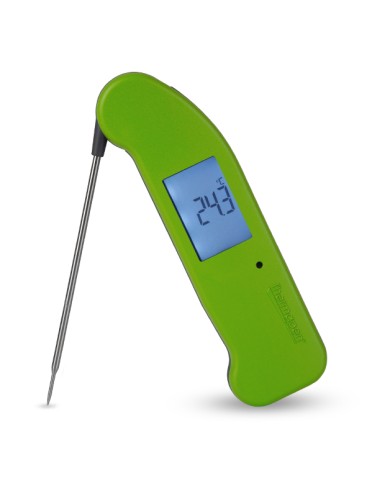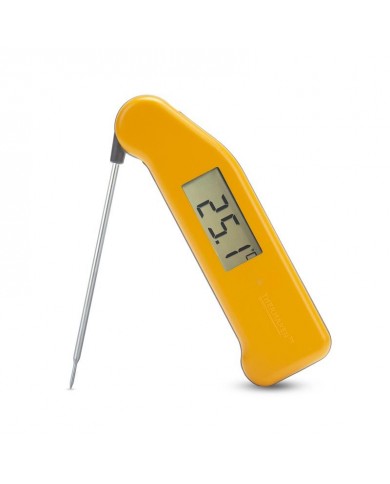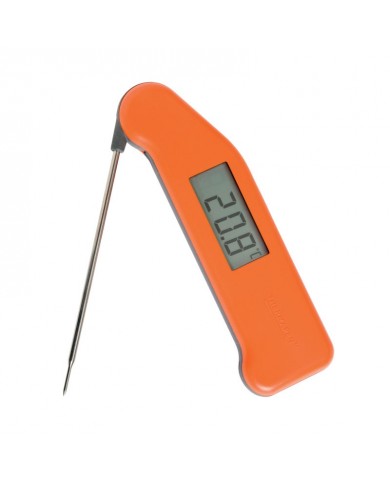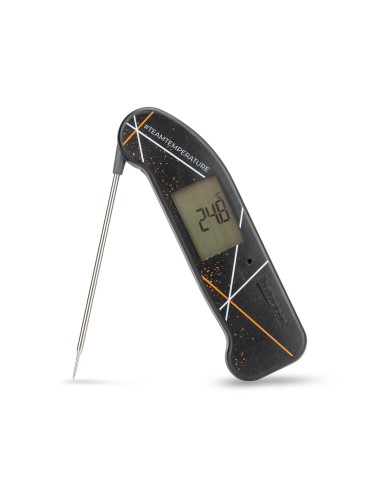How A Thermapen Will Take Your Sourdough To The Next Level
- 26 Feb 2020
- Home , Baking , Tips, Advice & Info

Sourdough baking is a humble, time-honoured tradition borne out of simple ingredients and beautiful craft. The loaf is crisp and rustic, its slices chewy and flavoursome. Typically made from nothing other than good quality flour, water and a little salt, it’s also healthy and easy to digest.
But with the production of this modest loaf comes an understanding of its secret fourth ingredient – temperature. Being aware of the temperature of your ingredients and baking conditions is essential to getting perfect and consistent sourdough loaves.
Start with the surroundings
There are two main elements to creating sourdough – the bread and the starter. Sourdough bread is unique in taste and texture because it uses a starter instead of yeast. Growing your starter involves putting flour and water in a container and topping it up or ‘feeding’ it while it ferments. Temperature is crucial to fermenting, the optimum being 24-29°C for sourdough starter. Too low and it will take a long time to wake up, too high and it can kill the yeast.
Maintaining your starter at the correct degree isn’t essential for it to grow, but being aware of what temperature its environment is, is important in your understanding of how long it’s taking to thrive. The Thermapen reads the ambient temperature surrounding its thermocouple probe as soon as it’s opened, so simply give it a small wave in the air and allow it to stabilise in order to find out the room temperature.
If it’s too hot or cold, search for a place with better conditions such as an airing cupboard or consider investing in a bread proofer.
Check your water
When combining the ingredients for your starter, the water should be at room temperature, 22°C. However, in chilly conditions it can speed things along if your water is up to 35°C. Check the temperature of your water before use, use your room temperature as a guide for how warm you’d like it to be, and heat it in a pan or cool it in the fridge until you reach your desired temperature.
Know your dough
Your final dough temperature (FDT), the temperature of the dough immediately after all of the ingredients have been mixed together, tells you how long your bulk fermentation time needs to be. The bulk fermentation time must be correct or the bread can be under or over proofed. For sourdough you should aim for your FDT to be 24-26°C, resulting in a bulk fermentation time of four hours. The temperature of your room and your ingredients will influence the FDT, but the only element that you can control is the water. So in order to get your desired FDT you must ensure your water is the correct temperature. You can use this handy calculator to work out what temperature your water needs to be, and then adjust it accordingly.
Proof it to perfection
Like your starter, your dough’s surroundings need to fall within an ideal range in order for it to proof correctly. Bulk fermentation is the primary step in proofing sourdough, where the dough will do the majority of its rising. During this period the dough should be kept at an ambient temperature of 24-26°C. If conditions are cool put your dough in the oven with just the light switched on – just keep an eye on the temperature to ensure it doesn’t get too high.
Validate the bake
Ensure your loaf is ready to come out of the oven by taking the internal temperature with your Thermapen. Once cooked it should read 97°C. Let the bread cool down to room temperature (22°C) before slicing – this allows the texture to firm up and prevents steam escaping which will keep the bread fresher for longer.
The key to successful bread is precision and accuracy, so by using a Thermapen to take control of your baking temperatures you can ensure you are producing consistently impeccable loaves.













